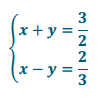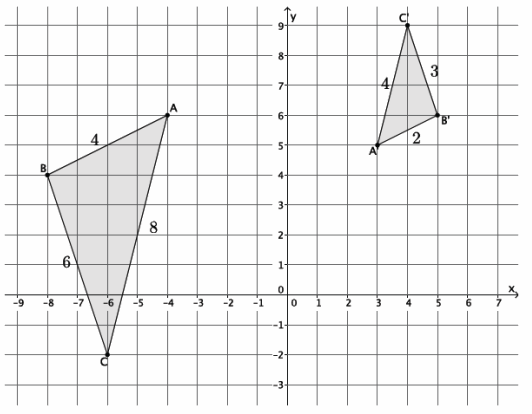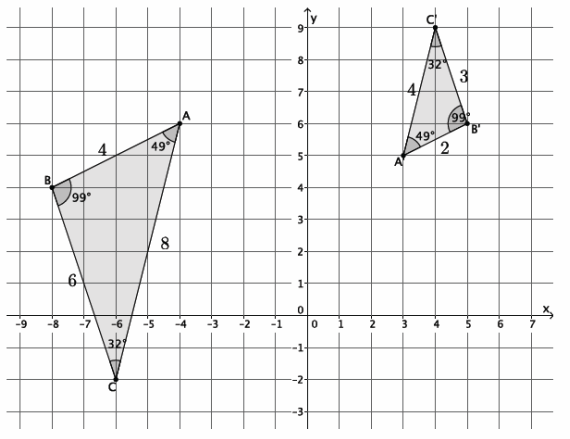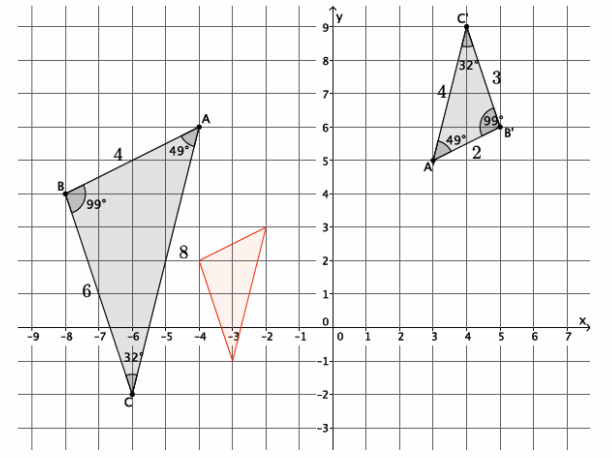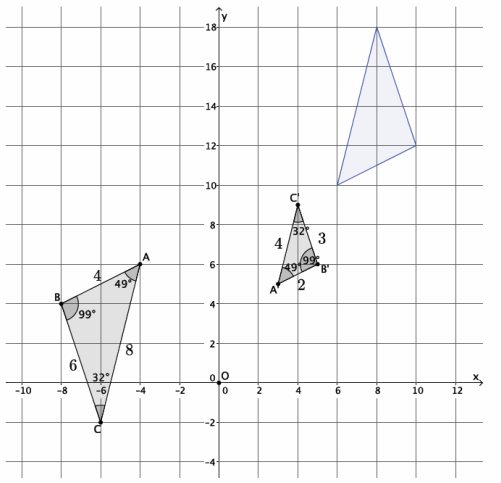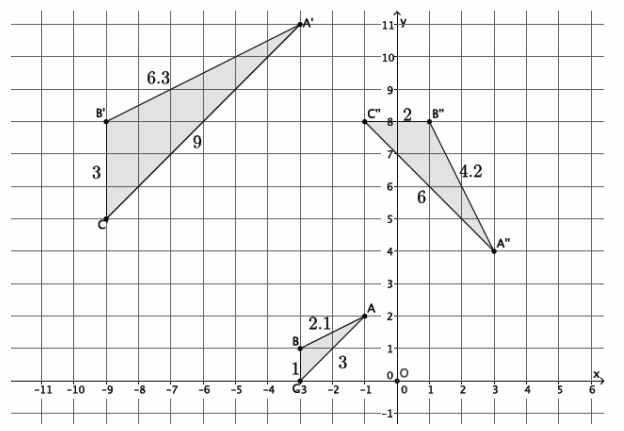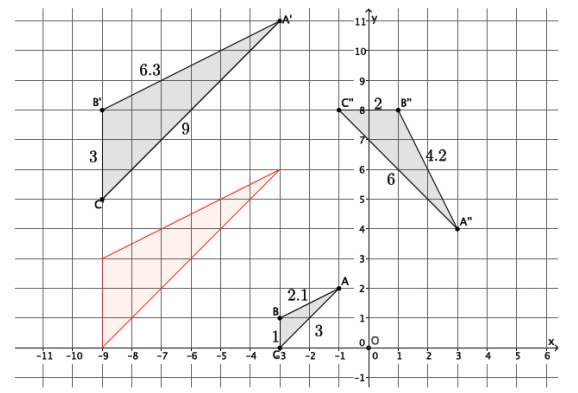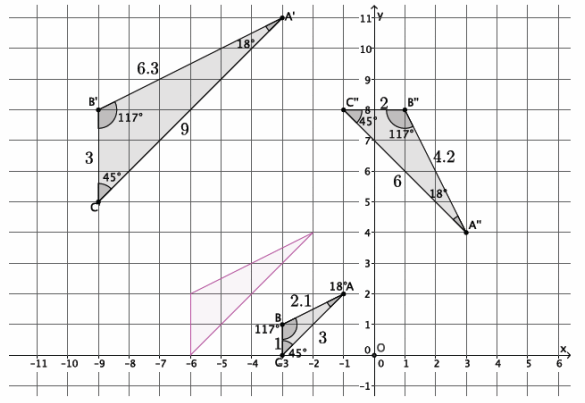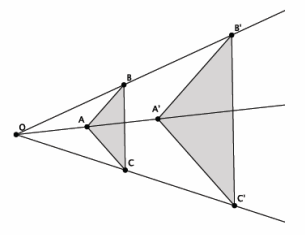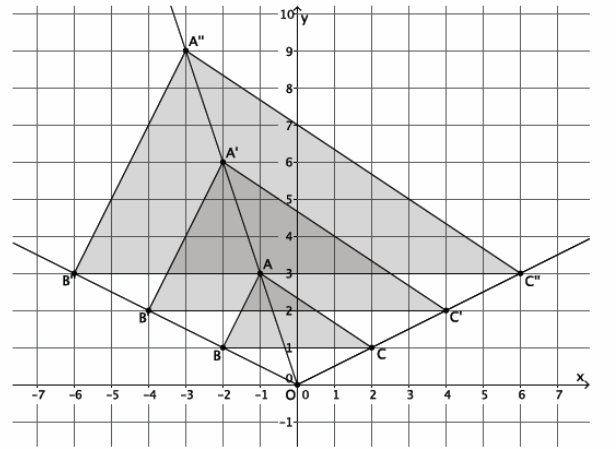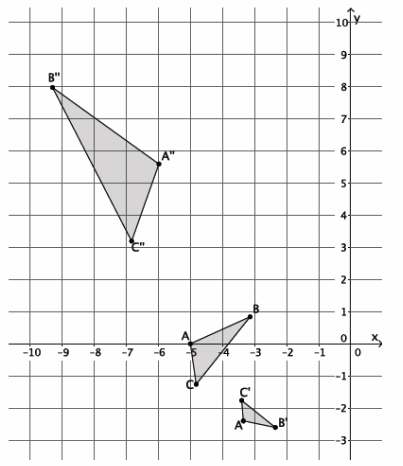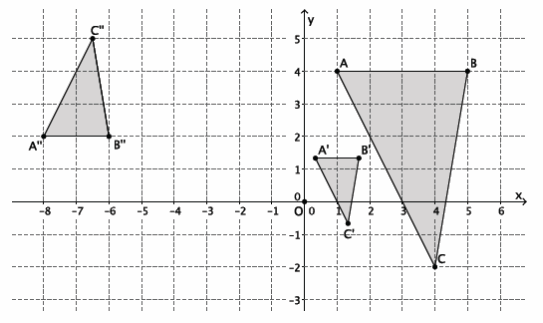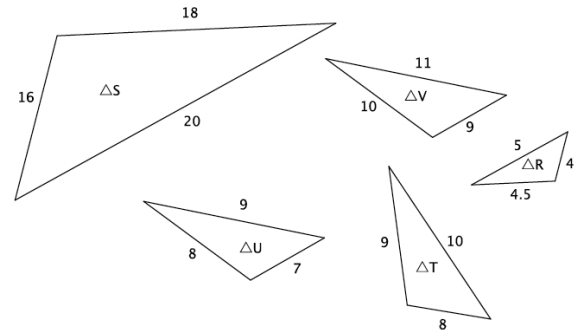Engage NY Eureka Math 8th Grade Module 4 Lesson 4 Answer Key
Eureka Math Grade 8 Module 4 Lesson 4 Exercise Answer Key
For each problem, show your work, and check that your solution is correct.
Exercise 1.
Solve the linear equation x+x+2+x+4+x+6=-28. State the property that justifies your first step and why you chose it.
Answer:
The left side of the equation can be transformed from x+x+2+x+4+x+6 to 4x+12 using the commutative and distributive properties. Using these properties decreases the number of terms of the equation. Now we have the equation:
4x+12=-28
4x+12-12=-28-12
4x=-40
\(\frac{1}{4}\)∙4x=-40∙\(\frac{1}{4}\)
x=-10.
The left side of the equation is equal to (-10)+(-10)+2+(-10)+4+(-10)+6, which is -28. Since the left side is equal to the right side, then x=-10 is the solution to the equation.
Note: Students could use the division property in the last step to get the answer.
Exercise 2.
Solve the linear equation 2(3x+2)=2x-1+x. State the property that justifies your first step and why you chose it.
Answer:
Both sides of equation can be rewritten using the distributive property. I have to use it on the left side to expand the expression. I have to use it on the right side to collect like terms.
The left side is
2(3x+2)=6x+4.
The right side is
2x-1+x=2x+x-1
=3x-1.
The equation is
6x+4=3x-1
6x+4-4=3x-1-4
6x=3x-5
6x-3x=3x-3x-5
(6-3)x=(3-3)x-5
3x=-5
\(\frac{1}{3}\)∙3x=\(\frac{1}{3}\)∙(-5)
x=-\(\frac{5}{3}\).
The left side of the equation is 2(3x+2). Replacing x with –\(\frac{5}{3}\) gives 2(3(-\(\frac{5}{3}\))+2)=2(-5+2)=2(-3)=-6. The right side of the equation is 2x-1+x. Replacing x with –\(\frac{5}{3}\) gives 2(-\(\frac{5}{3}\))-1+(-\(\frac{5}{3}\))=-\(\frac{10}{3}\)-1-\(\frac{5}{3}\)=-6. Since both sides are equal to -6, then x=-\(\frac{5}{3}\) is a solution to 2(3x+2)=2x-1+x.
Note: Students could use the division property in the last step to get the answer.
Exercise 3.
Solve the linear equation x-9=\(\frac{3}{5}\) x. State the property that justifies your first step and why you chose it.
Answer;
I chose to use the subtraction property of equality to get all terms with an x on one side of the equal sign.
x-9=\(\frac{3}{5}\) x
x-x-9=\(\frac{3}{5}\) x-x
(1-1)x-9=(\(\frac{3}{5}\)-1)x
-9=-\(\frac{2}{5}\) x
–\(\frac{5}{2}\)∙(-9)=-\(\frac{5}{2}\)∙-\(\frac{2}{5}\) x
4\(\frac{5}{2}\)=x
The left side of the equation is 4\(\frac{5}{2}\)– \(\frac{18}{2}\)=\(\frac{27}{2}\). The right side is \(\frac{3}{5}\)∙4\(\frac{5}{2}\)=\(\frac{3}{1}\)∙\(\frac{9}{2}\)=\(\frac{27}{2}\). Since both sides are equal to the same number, then x=4\(\frac{5}{2}\) is a solution to x-9=\(\frac{3}{5}\) x.
Exercise 4.
Solve the linear equation 29-3x=5x+5. State the property that justifies your first step and why you chose it.
Answer:
I chose to use the addition property of equality to get all terms with an x on one side of the equal sign.
29-3x=5x+5
29-3x+3x=5x+3x+5
29=8x+5
29-5=8x+5-5
24=8x
\(\frac{1}{8}\)∙24=\(\frac{1}{8}\)∙8x
3=x
The left side of the equal sign is 29-3(3)=29-9=20. The right side is equal to 5(3)+5=15+5=20. Since both sides are equal, x=3 is a solution to 29-3x=5x+5.
Note: Students could use the division property in the last step to get the answer.
Exercise 5.
Solve the linear equation \(\frac{1}{3}\) x-5+171=x. State the property that justifies your first step and why you chose it.
Answer:
I chose to combine the constants -5 and 171. Then, I used the subtraction property of equality to get all terms with an x on one side of the equal sign.
\(\frac{1}{3}\) x-5+171=x
\(\frac{1}{3}\) x+166=x
\(\frac{1}{3}\) x-\(\frac{1}{3}\) x+166=x-\(\frac{1}{3}\) x
166=\(\frac{2}{3}\) x
166∙\(\frac{3}{2}\)=\(\frac{3}{2}\)∙\(\frac{2}{3}\) x
83∙3=x
249=x
The left side of the equation is \(\frac{1}{3}\)∙249-5+171=83-5+171=78+171=249, which is exactly equal to the right side. Therefore, x=249 is a solution to \(\frac{1}{3}\) x-5+171=x.
Eureka Math Grade 8 Module 4 Lesson 4 Exit Ticket Answer Key
Question 6.
Guess a number for x that would make the equation true. Check your solution.
5x-2=8
Answer:
When x=2, the left side of the equation is 8, which is the same as the right side. Therefore, x=2 is the solution to the equation.
Question 7.
Use the properties of equality to solve the equation 7x-4+x=12. State which property justifies your first step and why you chose it. Check your solution.
Answer:
I used the commutative and distributive properties on the left side of the equal sign to simplify the expression to fewer terms.
7x-4+x=12
7x+x-4=12
(7+1)x-4=12
8x-4=12
8x-4+4=12+4
8x=16
\(\frac{8}{8}\)x=\(\frac{16}{8}\)
x=2
The left side of the equation is 7(2)-4+2=14-4+2=12. The right side is also 12. Since the left side equals the right side, x=2 is the solution to the equation.
Question 8.
Use the properties of equality to solve the equation 3x+2-x=11x+9. State which property justifies your first step and why you chose it. Check your solution.
Answer:
I used the commutative and distributive properties on the left side of the equal sign to simplify the expression to fewer terms.
3x+2-x=11x+9
3x-x+2=11x+9
(3-1)x+2=11x+9
2x+2=11x+9
2x-2x+2=11x-2x+9
(2-2)x+2=(11-2)x+9
2=9x+9
2-9=9x+9-9
-7=9x
–\(\frac{7}{9}\)=\(\frac{9}{9}\) x
–\(\frac{7}{9}\)=x
The left side of the equation is 3(\(\frac{-7}{9}\))+2-\(\frac{-7}{9}\)=-\(\frac{21}{9}\)+\(\frac{18}{9}\)+\(\frac{7}{9}\)=\(\frac{4}{9}\). The right side is 11(-\(\frac{7}{9}\))+9=\(\frac{-77}{9}\)+\(\frac{81}{9}\)=\(\frac{4}{9}\). Since the left side equals the right side, x=-\(\frac{7}{9}\) is the solution to the equation.
Eureka Math Grade 8 Module 4 Lesson 4 Problem Set Answer Key
Students solve equations using properties of equality.
For each problem, show your work, and check that your solution is correct.
Question 1.
Solve the linear equation x+4+3x=72. State the property that justifies your first step and why you chose it.
Answer:
I used the commutative and distributive properties on the left side of the equal sign to simplify the expression to fewer terms.
x+4+3x=72
x+3x+4=72
(1+3)x+4=72
4x+4=72
4x+4-4=72-4
4x=68
\(\frac{4}{4}\) x=\(\frac{68}{4}\)
x=17
The left side is equal to 17+4+3(17)=21+51=72, which is equal to the right side. Therefore, x=17 is a solution to the equation x+4+3x=72.
Question 2.
Solve the linear equation x+3+x-8+x=55. State the property that justifies your first step and why you chose it.
Answer:
I used the commutative and distributive properties on the left side of the equal sign to simplify the expression to fewer terms.
x+3+x-8+x=55
x+x+x+3-8=55
(1+1+1)x+3-8=55
3x-5=55
3x-5+5=55+5
3x=60
\(\frac{3}{3}\) x=\(\frac{60}{3}\)
x=20
The left side is equal to 20+3+20-8+20=43-8+20=35+20=55, which is equal to the right side. Therefore, x=20 is a solution to x+3+x-8+x=55.
Question 3.
Solve the linear equation \(\frac{1}{2}\) x+10=\(\frac{1}{4}\) x+54. State the property that justifies your first step and why you chose it.
Answer;
I chose to use the subtraction property of equality to get all of the constants on one side of the equal sign.
\(\frac{1}{2}\) x+10=\(\frac{1}{4}\) x+54
\(\frac{1}{2}\) x+10-10=\(\frac{1}{4}\) x+54-10
\(\frac{1}{2}\) x=\(\frac{1}{4}\) x+44
\(\frac{1}{2}\) x-\(\frac{1}{4}\) x=\(\frac{1}{4}\) x-\(\frac{1}{4}\) x+44
\(\frac{1}{4}\) x=44
4∙\(\frac{1}{4}\) x=4∙44
x=176
The left side of the equation is \(\frac{1}{2}\) (176)+10=88+10=98. The right side of the equation is
\(\frac{1}{4}\) (176)+54=44+54=98. Since both sides equal 98, x=176 is a solution to the equation
\(\frac{1}{2}\) x+10=\(\frac{1}{4}\) x+54.
Question 4.
Solve the linear equation \(\frac{1}{4}\) x+18=x. State the property that justifies your first step and why you chose it.
I chose to use the subtraction property of equality to get all terms with an x on one side of the equal sign.
\(\frac{1}{4}\) x+18=x
\(\frac{1}{4}\) x-\(\frac{1}{4}\) x+18=x-\(\frac{1}{4}\) x
18=\(\frac{3}{4}\) x
\(\frac{4}{3}\)∙18=\(\frac{4}{3}\)∙\(\frac{3}{4}\) x
24=x
The left side of the equation is \(\frac{1}{4}\) (24)+18=6+18=24, which is what the right side is equal to. Therefore, x=24 is a solution to \(\frac{1}{4}\) x+18=x.
Question 5.
Solve the linear equation 17-x=\(\frac{1}{3}\)∙15+6. State the property that justifies your first step and why you chose it.
Answer:
The right side of the equation can be simplified to 11. Then, the equation is
17-x=11,
and x=6. Both sides of the equation equal 11; therefore, x=6 is a solution to the equation 17-x=\(\frac{1}{3}\)∙15+6. I was able to solve the equation mentally without using the properties of equality.
Question 6.
Solve the linear equation \(\frac{x+x+2}{4}\)=189.5. State the property that justifies your first step and why you chose it.
Answer:
I chose to use the multiplication property of equality to get all terms with an x on one side of the equal sign.
\(\frac{x+x+2}{4}\)=189.5
x+x+2=4(189.5)
2x+2=758
2x+2-2=758-2
2x=756
\(\frac{2}{2}\) x=\(\frac{756}{2}\)
x=378
The left side of the equation is \(\frac{378+378+2}{4}\)=\(\frac{758}{4}\)=189.5, which is equal to the right side of the equation. Therefore, x=378 is a solution to \(\frac{x+x+2}{4}\)=189.5.
Question 7.
Alysha solved the linear equation 2x-3-8x=14+2x-1. Her work is shown below. When she checked her answer, the left side of the equation did not equal the right side. Find and explain Alysha’s error, and then solve the equation correctly.
2x-3-8x=14+2x-1
-6x-3=13+2x
-6x-3+3=13+3+2x
-6x=16+2x
-6x+2x=16
-4x=16
\(\frac{-4}{-4}\) x=\(\frac{16}{-4}\)
x=-4
Answer:
Alysha made a mistake on the fifth line. She added 2x to the left side of the equal sign and subtracted 2x on the right side of the equal sign. To use the property correctly, she should have subtracted 2x on both sides of the equal sign, making the equation at that point:
-6x-2x=16+2x-2x
-8x=16
\(\frac{-8}{-8}\) x=\(\frac{16}{-8}\)
x=-2.
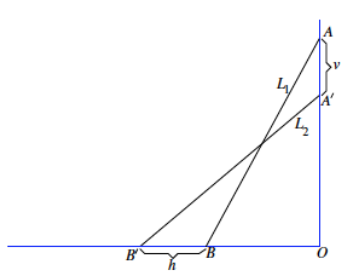
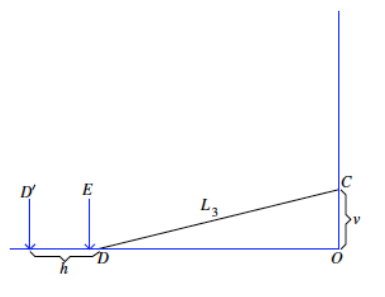

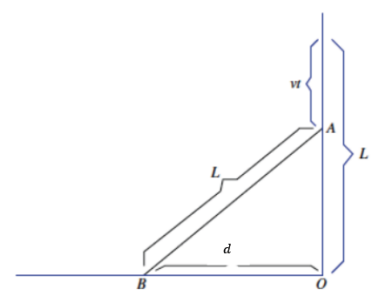
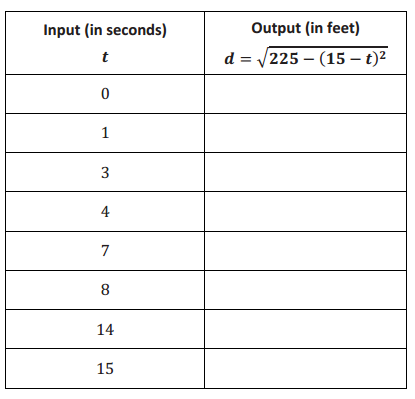
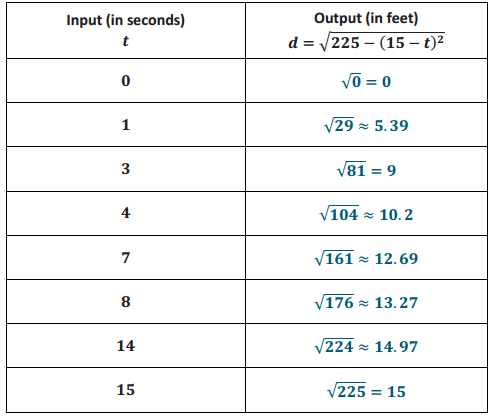
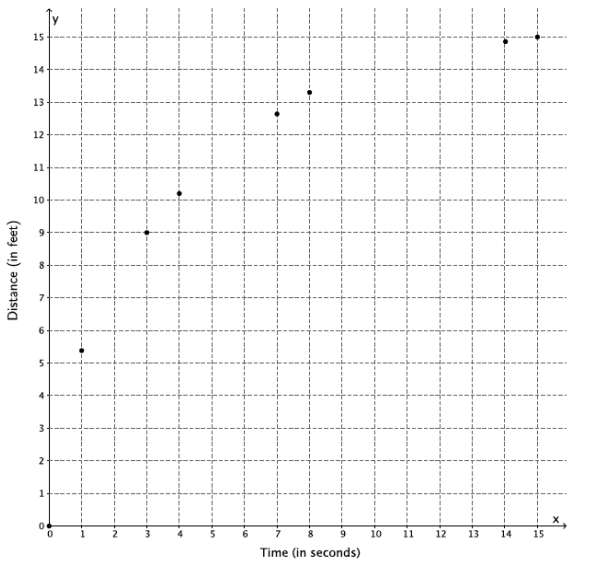

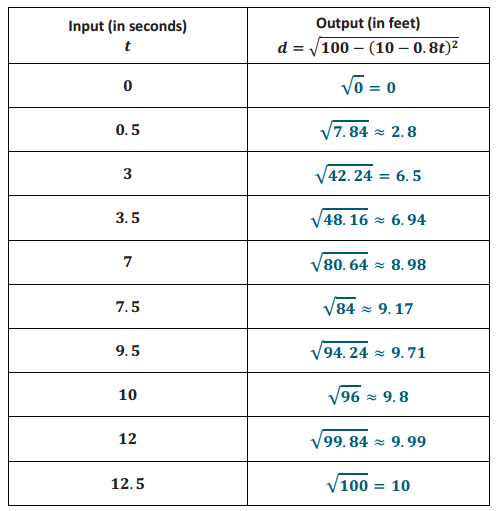
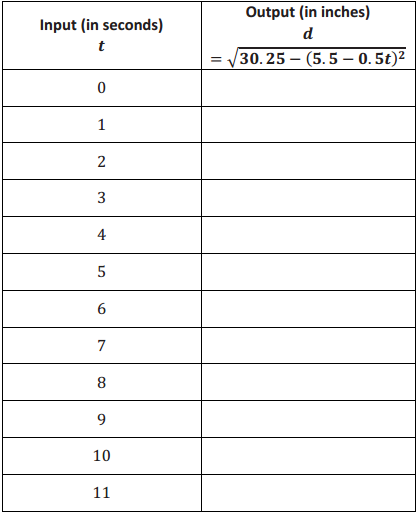
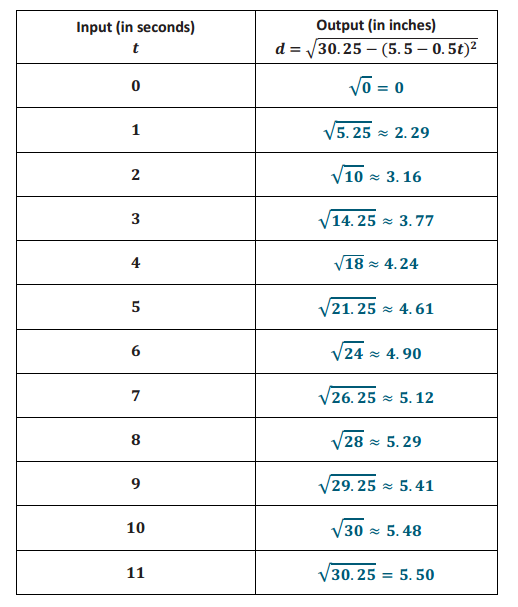
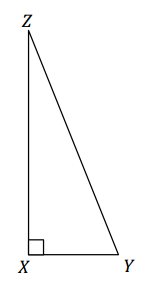
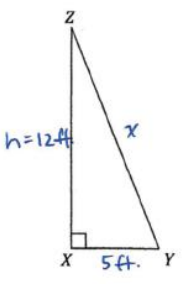
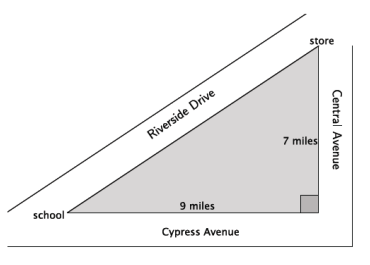
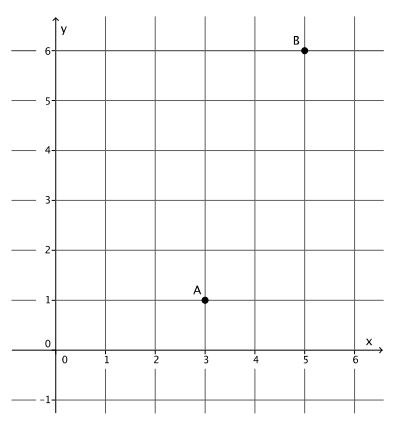
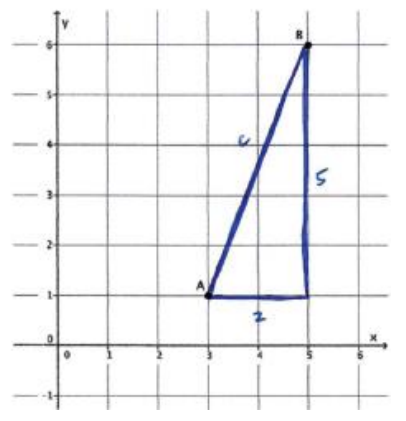
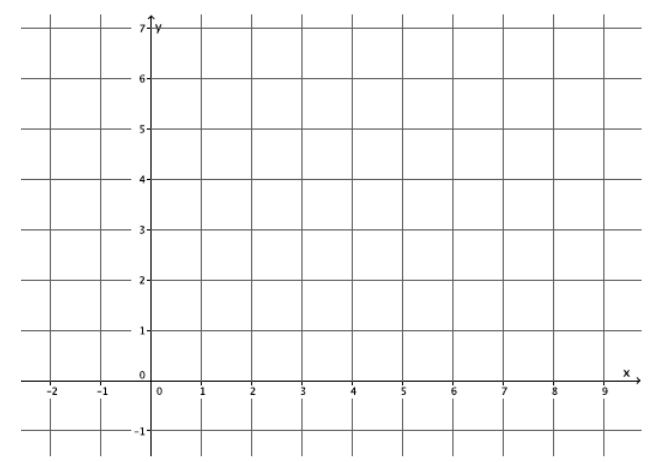
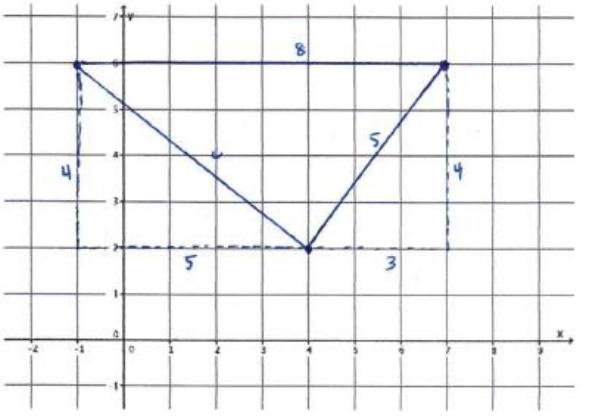
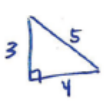


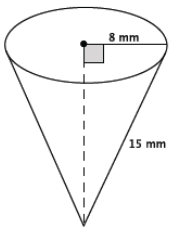
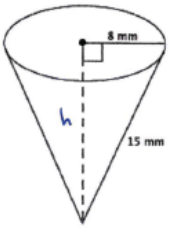
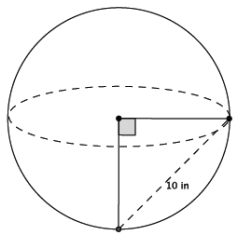
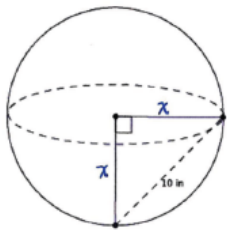
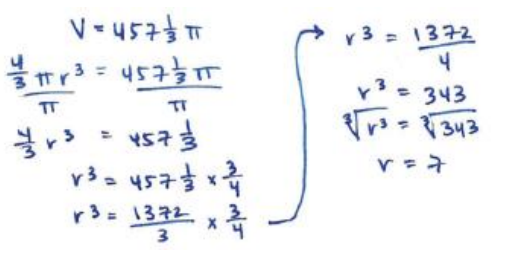
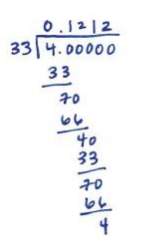



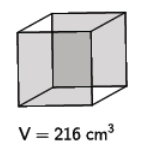
 to find Pythagorean triples for the given values of s and t. Recall that the solution in the form of (\(\frac{c}{b}\), \(\frac{a}{b}\)) is the triple a, b, c.
to find Pythagorean triples for the given values of s and t. Recall that the solution in the form of (\(\frac{c}{b}\), \(\frac{a}{b}\)) is the triple a, b, c.

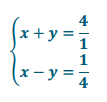
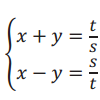 to find Pythagorean triples for the given values of s and t. Recall that the solution, in the form of (c/b, a/b), is the triple, a, b, c.
to find Pythagorean triples for the given values of s and t. Recall that the solution, in the form of (c/b, a/b), is the triple, a, b, c.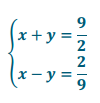
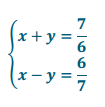
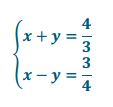
 to find Pythagorean triples for the given values of s = 2 and t = 3. Recall that the solution in the form of (\(\frac{c}{b}\), \(\frac{a}{b}\)) is the triple a, b, c. Verify your results.
to find Pythagorean triples for the given values of s = 2 and t = 3. Recall that the solution in the form of (\(\frac{c}{b}\), \(\frac{a}{b}\)) is the triple a, b, c. Verify your results.